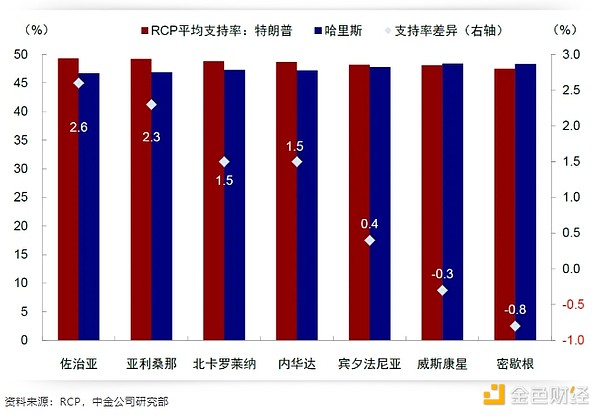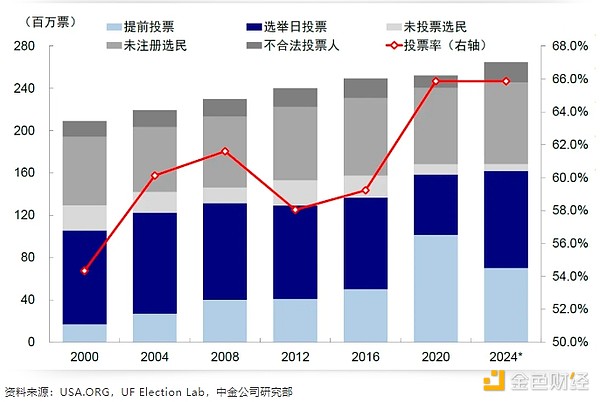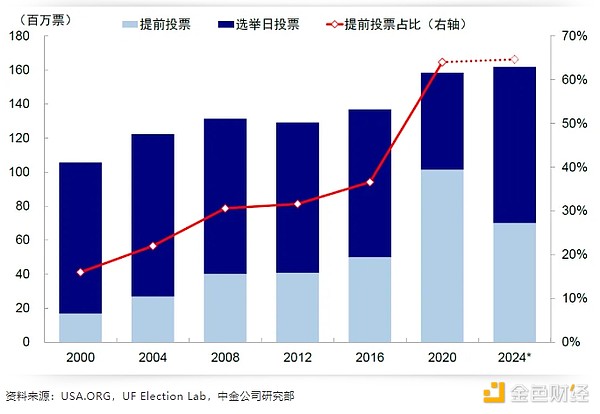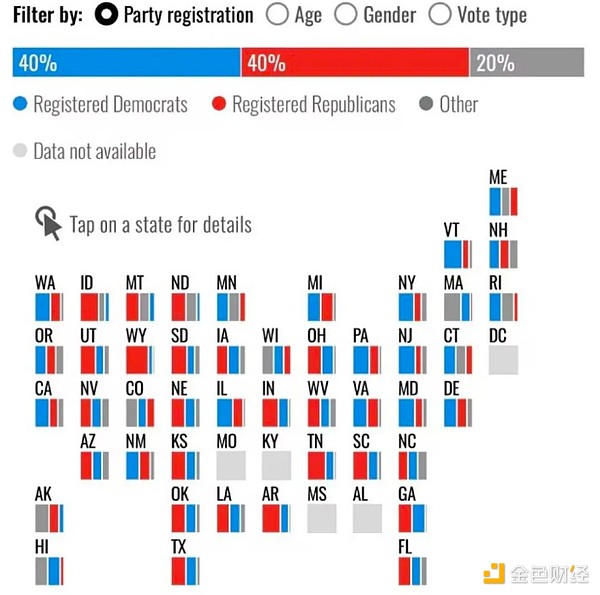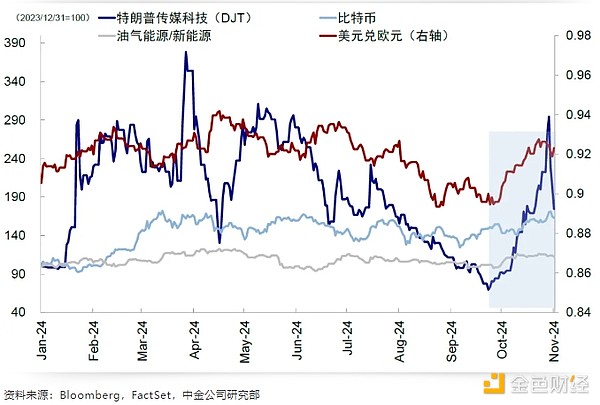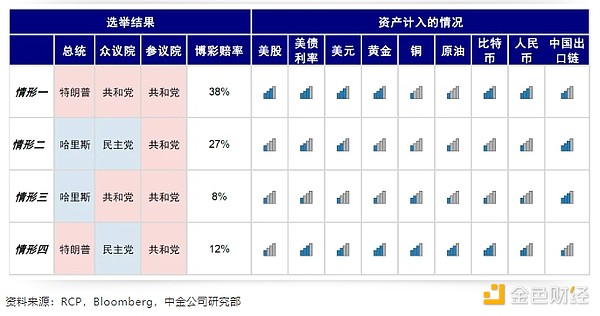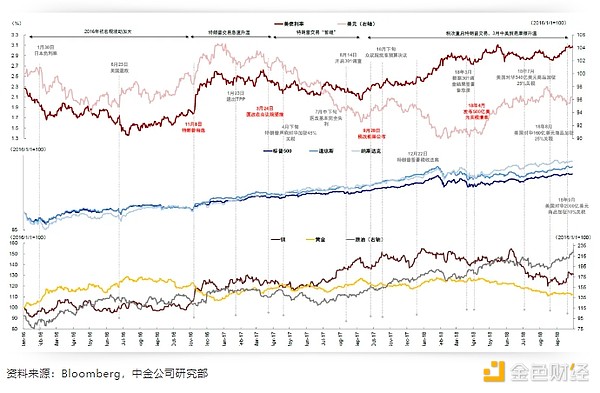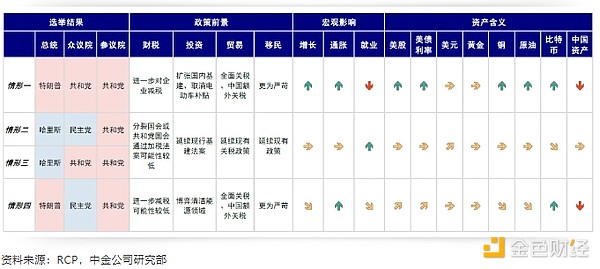As the voting day on November 5 approaches, how to track the real-time election situation and when the results will be released are issues that everyone is very concerned about.
1. How long does the voting last? It will open in sequence from east to west according to the time zone, and will basically close at noon on the 6th Beijing time
Due to different time zones, the opening and closing times of polling stations across the United States on November 5th are also different, and they are generally closed in sequence from east to west. For example, the first polling stations to close included parts of Indiana and Kentucky, which closed at 6 p.m. Eastern Time on November 5 (corresponding to 6 a.m. Beijing Time on the 6th). The last state to close was Alaska, which closed from 12 noon to 1 p.m. Beijing Time on the 6th.
The voting deadlines for the seven important swing states are(Beijing Time): Georgia, 7 a.m. on the 6th; North Carolina, 7:30 a.m. on the 6th; Pennsylvania, 8 a.m. on the 6th; Michigan, 8-9 a.m. on the 6th; Arizona, 9 a.m. on the 6th; Wisconsin, 9 a.m. on the 6th; Nevada, 10 a.m. on the 6th.
Chart: Voting stations in Nevada, the last swing state, closed at 10 a.m. on the 6th, Beijing time

2. When will the results be released? Or in the evening of the 6th, Beijing time
The counting rules and time of each state are different. For example, some states count votes while voting on the voting day, and some states allow early voting to be counted before the voting day. Shortly after the polling stations in each state closed, a considerable part of the voting results had been counted, and the remaining votes usually did not affect the overall situation unless the election was very close. Therefore, under normal circumstances, the final results will generally not be released later than late at night on the voting day, that is, noon on the 6th Beijing time. However, if there are many mail-in ballots or a recount is triggered, the results may be delayed. From the fact that mail-in ballots account for a large proportion this time and the rules that some swing states do not allow early counting, the final results may be slightly delayed, but they can basically be released in the afternoon or evening of the 6th Beijing time. If the results of some key swing states are very close and need to be recounted, the results will also be delayed. Specifically for the 7 most critical swing states, the following are the specific counting times and details (all Beijing time):
► Georgia: It may be the first swing state to announce the results. Georgia has a high proportion of early voting (80%), and has been processing mail-in ballots since October 21, stipulating that mail-in ballots must be mailed before the polling stations close. It is expected that 90% of the counting will be completed before 10:30 am Beijing time on the 6th. Georgia does not have an automatic recount trigger, but candidates can apply for a recount if the final difference is less than or equal to 0.5% of the total votes.
► North Carolina: Results may be available at noon on the 6th. North Carolina also has a high rate of early voting (75%), and this year's new rules require that mail-in ballots must be received before Election Day. Early voting and Election Day voting results will be announced between 7:30 and 9:30 a.m. and 8:30 and 1 p.m. Beijing time on the 6th, respectively. North Carolina also does not have an automatic recount trigger, but candidates can apply for a recount if the final difference is less than or equal to 0.5% of the total votes or 10,000 votes.
► Michigan: Results may be available at noon on the 6th. Most districts in Michigan began processing mail-in ballots on October 28, and mail-in ballots must be received before the polls close on Election Day. Most precincts will finish counting by the morning of the 6th, but full results won't be available until the evening. If the statewide margin of victory is less than 2,000 votes, an automatic recount will be triggered.
► Pennsylvania: May be announced in the afternoon or evening of the 6th. Mail-in ballots must be received before Election Day, and processing begins at 7 a.m. on Election Day. Early counting is not allowed, so counting may take longer. If the statewide margin of victory is less than or equal to 0.5%, an automatic recount will be triggered.
► Wisconsin: May be announced in the afternoon or evening of the 6th. Mail-in ballots must be received before Election Day, and early counting is not allowed, just like Pennsylvania, but election workers must count overnight to speed up the release of votes. Historically, the counting is usually completed before 1 p.m. Wisconsin does not have a trigger for an automatic recount, but candidates can request a recount if the final margin is less than or equal to 1%.
► Arizona: Preliminary results may be released in the morning, but full results are expected by 5 p.m. Most voters vote by mail and early counting is allowed, but votes cast on Election Day will not be counted until after the polls close. Preliminary results are usually released around 10 a.m., but the overall release time is extended for two reasons: 1) the number of votes cast on Election Day must be calculated and announced before the official count, and 2) Maricopa County, the state's largest county, estimates that a complete count of votes cast at polling stations on Election Day may not be announced until 5 p.m. The trigger threshold for an automatic recount is 0.5%.
► Nevada: It may take several days to count mail-in ballots. In-person voting results will be released a few hours after the official polls close, but it will still take several days to count mail-in ballots. Ballots must be postmarked before Election Day, and mail-in ballots are counted after they are received, but because Nevada allows ballots to be received before November 9, the counting time is longer.
3. How to watch the game? Pennsylvania is the "match point", Harris "must" win Pennsylvania, Trump has more ways to win
Due to the unique electoral vote mechanism in the United States and the stable "base" of the two parties, most states play the role of "going through the motions" in the election. For example, according to the 270towin polls and the predictions of different models, Harris has basically locked in 226 votes and Trump has locked in 219 votes (270 electoral votes are needed to win the election).
On the contrary, some so-called "swing states" with unclear positions and stalemates have become the winners and losers of the election. There are seven swing states in this election. Blue Wall states include Michigan (15, -0.8%, the former refers to the number of electoral votes, the latter refers to the extent to which Trump leads Harris in the polls, the same below), Pennsylvania (19, 0.4%), and Wisconsin (10, -0.3%), with a total of 44 votes; the southern swing states of the "Sun Belt" include Georgia (16, 2.6%), North Carolina (16, 1.5%), Arizona (11, 2.3%), and Nevada (6, 1.5%), with a total of 49 votes. Among them, Pennsylvania has 19 electoral votes, making it the "match point" of this election.
From the current possibilities and paths to victory, Harris "must" win Pennsylvania, otherwise it will be almost difficult to win the election; Pennsylvania is equally important to Trump, but there are other paths, at least win a blue wall state (not necessarily Pennsylvania). Here are the specific paths:
► Trump's winning path: Trump only wins the "Sun Belt" swing states, which is not enough to reach 270 votes. He needs to win at least one blue wall state. 1) If Trump wins Pennsylvania, he only needs to win Georgia and Arizona in the Sun Belt (both of which are ahead by more than 2% in Republican polls), and North Carolina or Nevada (both of which are ahead by 1.5% in Republican polls) to win. 2) If Trump loses Pennsylvania, another more likely path is to win all four Sun Belt states and Wisconsin or Michigan, among which the Democratic Party's lead in Wisconsin is even lower (leading by 0.3%).
► Harris's path to victory: 1) If Harris wins all blue states, especially Pennsylvania, and the number of votes in traditional blue states that are almost locked in has just reached 270, this is also the path that her campaign is more focused on at present. Of the three blue states, the Democratic Party has a slight lead in the polls in Michigan and Wisconsin. Pennsylvania is more uncertain, so it is particularly important. 2) If Harris wins Pennsylvania but loses Michigan or Wisconsin, it is necessary to pay attention to whether North Carolina can be reversed (compared with other states, the Republican lead rate is lower). 3) If Harris loses Pennsylvania, or loses Michigan and Wisconsin at the same time, it will be very difficult to win by winning at least two swing states in the Sun Belt.
Chart: Pennsylvania is the key. Harris’s loss in Pennsylvania will significantly increase the challenge, and Trump has more paths to victory

4. Possible surprises? A tie or non-recognition of the result
There are three possible scenarios for a tie in this election[1]. In this case, the House of Representatives and the Senate need to vote together to elect the president and vice president. The result may be more favorable to the Republican Party, but it will take longer. The three possibilities are: 1) Harris wins Georgia, Arizona, Wisconsin, and Nevada; 2) Harris wins in Georgia, North Carolina, and Arizona; 3) Harris wins North Carolina, Arizona, Wisconsin, and Nevada. If the votes are tied, a contingency election will be held. The House of Representatives will elect the president. Representatives from each state will form a delegation and cast one vote after the total vote. The winner will be 26 votes or more in the 50 states in the United States. The Senate will elect the vice president. Each senator will cast one vote. The winner will be 51 votes or more. The elections of the House of Representatives and the Senate do not interfere with each other, and it is possible that the president and vice president belong to different parties. At that time, the ownership of the two houses of Congress in this election will play a key role.
The second surprise is that the losing party refuses to accept the election results. Generally, after the results are released, the losing party will issue a statement admitting defeat and accepting the election results. However, if the losing party does not recognize the election results in a low-probability event, it may cause greater turmoil. For example, Trump once questioned the results in 2020, which triggered the Capitol Hill incident in early 2021.
 Weiliang
Weiliang

